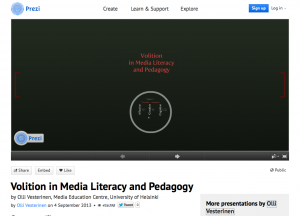The academic world is slowly moving towards the private sector and business world. For example research is opening up and spreading to wider audiences. One simple way of doing this is through making a YouTube video of research results, but there are other ways too.
One of the key ideas behind the Wired Minds Research Hub was to make the top level learning environment research of the University of Helsinki and its partner universities available and accessible to the public. To reflect on this aim, I got to thinking about the popularization of research.
For universities, it is no longer enough that high-quality scientific research is carried out and results are published in high impact research journals. It is quite common to popularly communicate research results with a wider audience while gaining publicity for the research group, project, university and the research itself. Let’s have a look at ways of going about this.
1. A (YouTube) Video – Whether it be a talking head with some PowerPoint slides or a more sophisticated documentary type of video, two things must be in place. The research results must be popularly presented and the video should attract the viewers’ attention. A good example is the latest YouTube video from the University of Helsinki about fascinating brain-research results.
2. Prezi.com – Around five years ago a serious competitor for PowerPoint presentations was launched. Prezi is a cloud service for presenting ideas on a virtual canvas. The idea of the zooming editor was to compete with the ordinary slide based presentations. As we started to use Prezi, we came to realize that a well created prezi can reach a surprisingly wide audience just inside the Prezi website. For example a media literacy research -project carried out in the Media Education Research Group at the University of Helsinki was presented in a conference and a hyperlink was made available for the conference participants. In a couple of years time this prezi has got hundreds of thousands of views. A number which is fairly difficult to reach even on YouTube.
http://prezi.com/lgtp9r5x2nas/volition-in-media-literacy-and-pedagogy/
3. An Infographic – It seems like sometimes even the shortest video is still too slow to communicate information. Faster ways, where information is available in one glimpse, are becoming popular. Infographics are visual representations of information and knowledge with an emphasis on data visualization. Many times the infographics shared online are basic PDF files with portions made to fit to your smartphone screen. This allows us to quickly scan the whole picture and handle complex information.
An example of an infographic is Components of a 21st Century Classroom. It brings a scientific orientation to a popular topic in educational research and policy making with the message ‘technology is changing the face of education.’
OmniSchool Research and Development Project (2011–2015) has been carrying out research on opening learning environments and its pedagogical models aiming to have an impact on mindset of teachers and principals. The actions have included a web service for teachers (Kaikkialla.fi), active online presence, organizing of events and as part of material production, various videos. This fall we will start an in-service training tour in schools around Finland with an idea of a research-based approach. We are now preparing new material for this tour and one form of it will be infographics. Only time will show how it goes!


